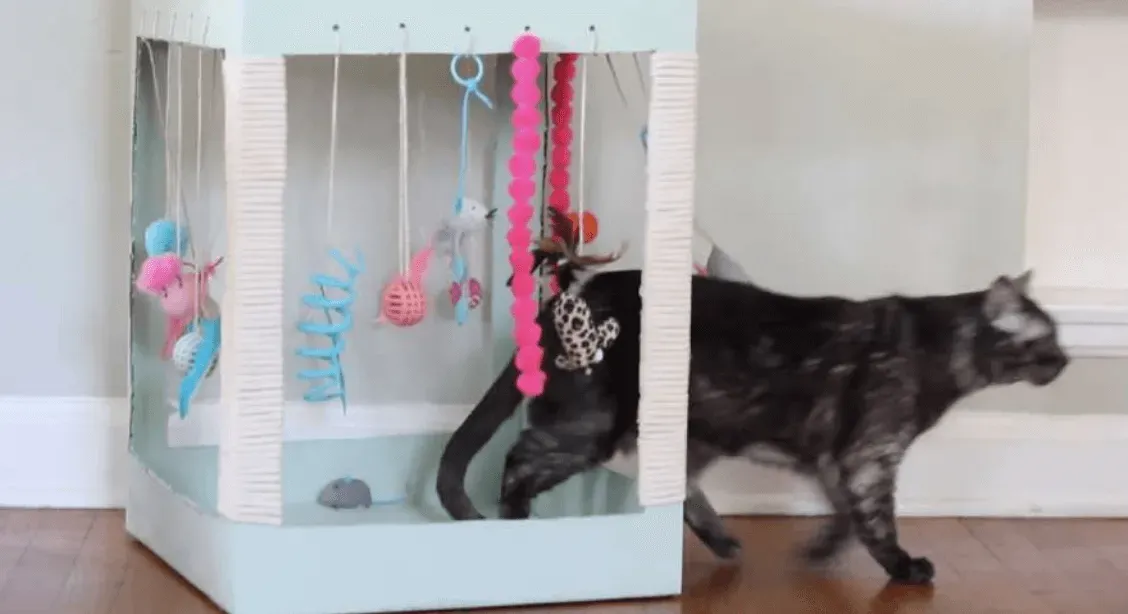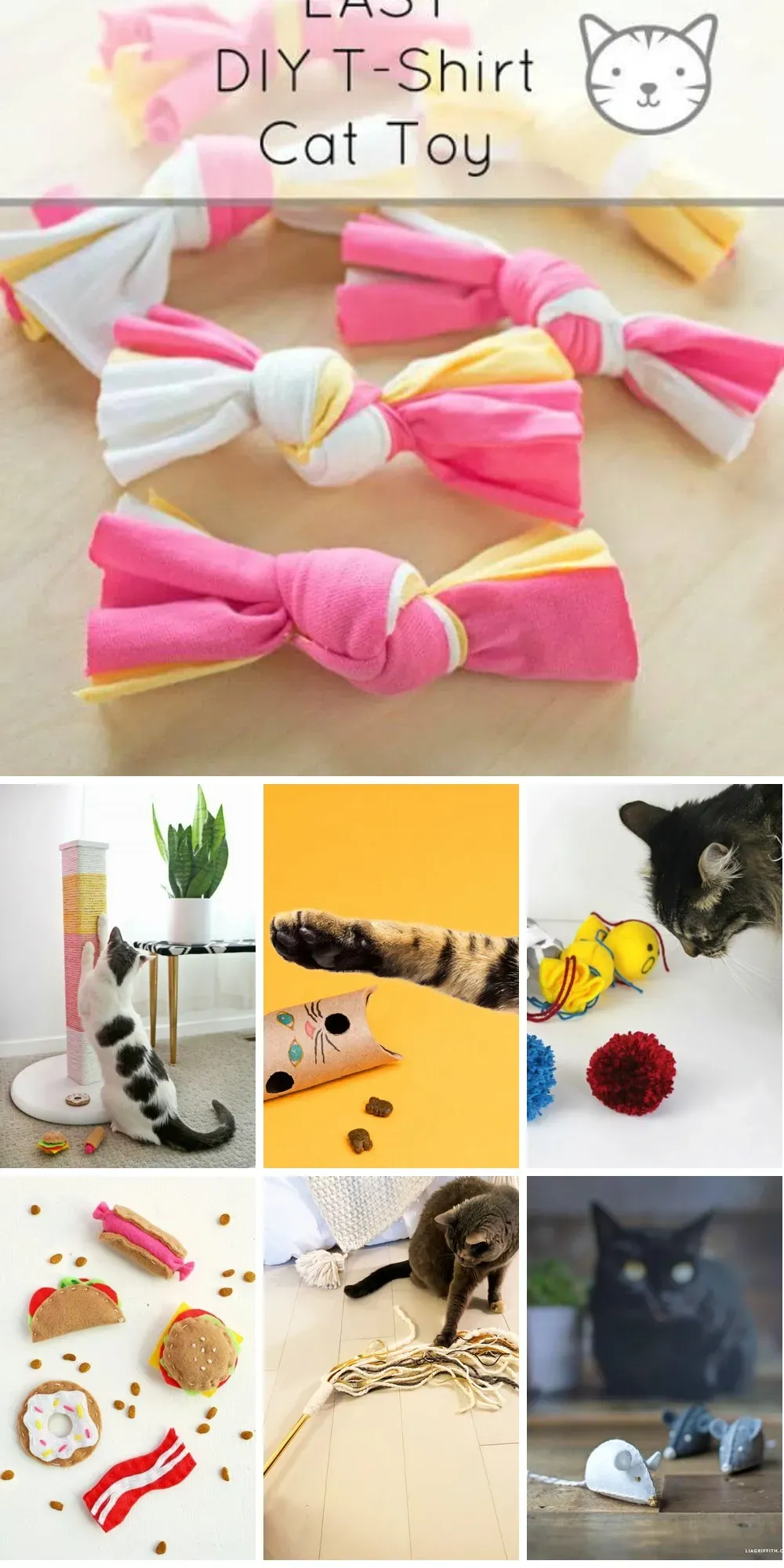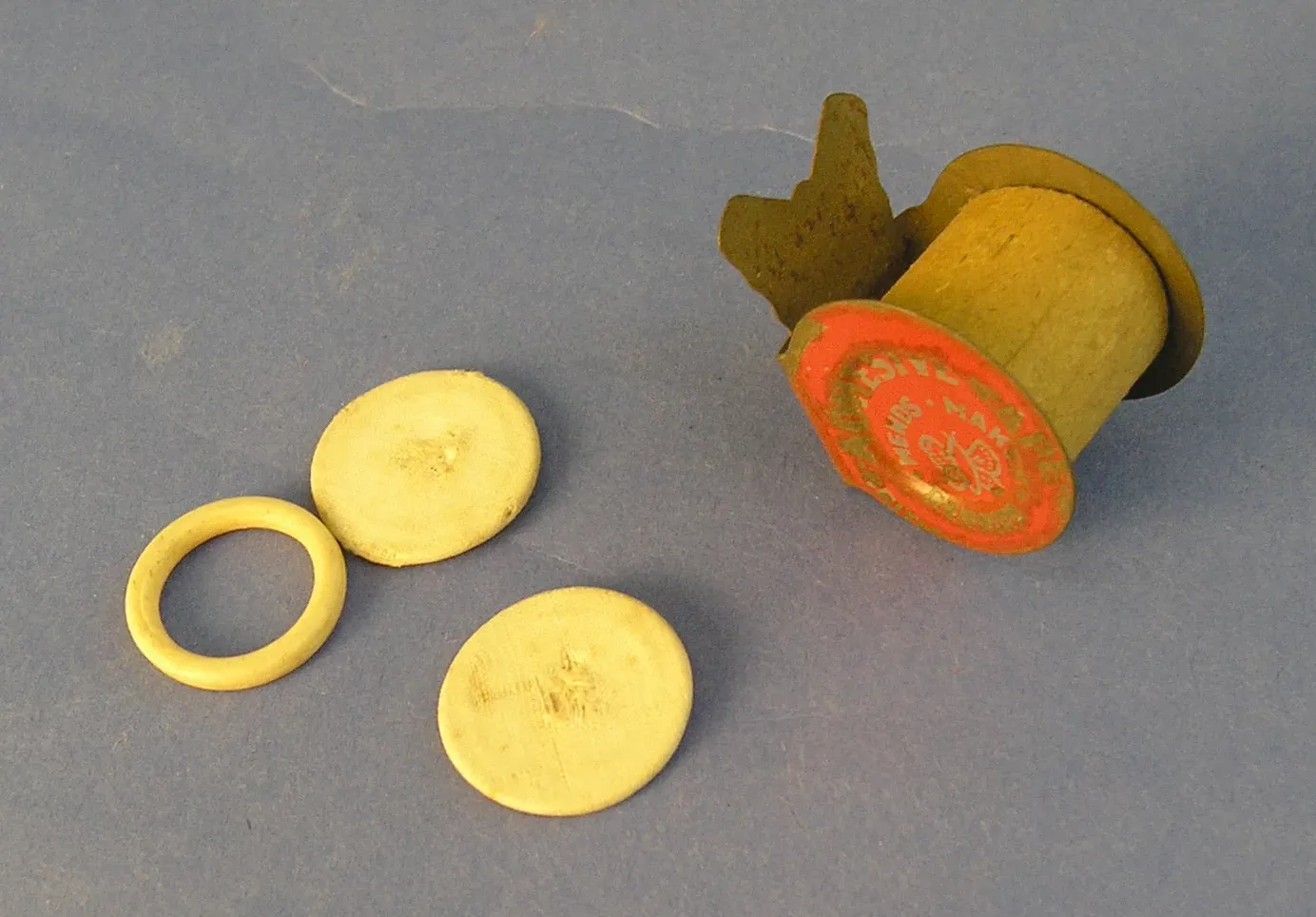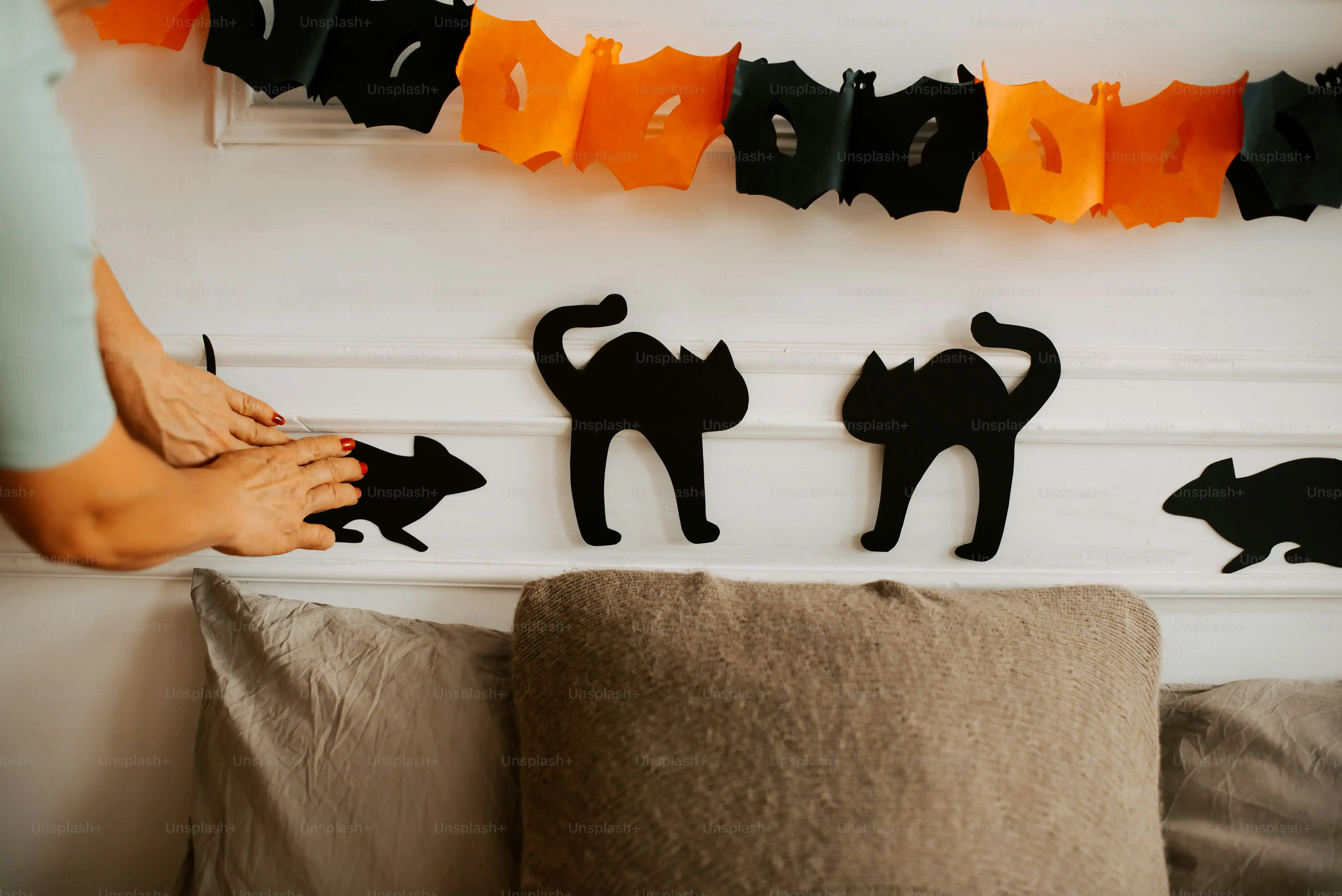Table of Contents
Ever drop a small fortune on a cat toy, only to see your feline friend ignore it completely and chase a rogue bottle cap instead? If that sounds familiar, you're not alone. Pet store aisles are packed with expensive distractions, but often the simplest things hold the most appeal for our whiskered companions. This is where the magic of creative homemade cat toys comes in. It’s not just about saving a few bucks, though that's a nice bonus. Crafting toys yourself lets you tap into your cat's natural instincts with items you already have, reducing waste and offering a unique bonding experience. This article walks you through the 'why' behind DIY cat toys, serves up some ridiculously easy projects using common household items, and even ventures into slightly more ambitious territory for the crafty types. Crucially, we'll cover how to keep things safe, because a fun toy should never be a hazard. Ready to channel your inner cat inventor and delight your furry roommate without breaking the bank? Let's dive into making some genuinely engaging toys they'll actually play with.
Why Bother with Creative Homemade Cat Toys? (Spoiler: Your Wallet Will Thank You)

Why Bother with Creative Homemade Cat Toys? (Spoiler: Your Wallet Will Thank You)
Saving Your Pennies (and Your Sanity)
Let's be real. Walking into a pet store can feel like entering a casino, except instead of losing money on slots, you're betting on whether your cat will deem that sparkly, feathered monstrosity worthy of five minutes of attention before ignoring it forever. Those fancy, store-bought gadgets add up fast. We're talking serious cash for something they might just chew on for a second or batting under the sofa never to be seen again. Getting into creative homemade cat toys flips that script entirely. You can raid your recycling bin or junk drawer and find treasure. A cardboard tube, an old sock, some yarn scraps – suddenly, you've got the raw materials for hours of feline entertainment, and it cost you exactly zero dollars. Think about all the overpriced catnip mice you *didn't* buy. That feels good.
Tailoring Fun to Your Feline Overlord
Beyond the financial perks, making toys yourself means you can actually make things your cat *likes*. You know your cat best. Do they lose their mind over crinkly sounds? Great, grab some cellophane or a plastic bag (under supervision, obviously). Are they obsessed with chasing things that roll? A simple crumpled paper ball or an empty thread spool is gold. Store-bought toys are mass-produced guesses at what cats want. Your creative homemade cat toys are bespoke pieces, designed specifically for your finicky friend's unique play style. Plus, you control the materials. No questionable dyes, weird plastics, or stuffing that looks suspiciously like it came from a dusty mattress. You know exactly what your cat is batting around or carrying proudly in their mouth.
So, what kind of play does your cat really go for?
- Are they hunters who love to stalk and pounce?
- Do they enjoy puzzle toys that make them work for a treat?
- Are they simple creatures who just want something to bat around?
- Is crinkle the magic sound that gets them going?
Whip Up Some Easy Creative Homemade Cat Toys

Whip Up Some Easy Creative Homemade Cat Toys
The Almighty Cardboard Tube and Other Household Heroes
Alright, forget fancy craft stores for a second. We're starting with the stuff you probably just tossed in the recycling bin. The cardboard tube from toilet paper or paper towels? Gold. Your cat will bat it, chase it, sometimes even try to wear it like a hat. Poke some holes in it and stuff a few treats inside for a simple puzzle toy. An empty paper bag (handles cut off for safety!) crinkles like a dream and provides a temporary hidey-hole. A simple bottle cap skitters across hard floors, triggering that prey drive. These are the OGs of creative homemade cat toys – minimal effort, maximum feline interest. My own cat spent an embarrassing amount of time batting a milk jug ring around the kitchen last week. Proof that simple works.
Sock Toys and Crinkle Balls
Got an old sock with no partner? Perfect. Stuff it with some wadded-up paper, maybe a little catnip if you have it, tie off the end, and you've got a soft, chewable, tossable toy. It's got that familiar laundry smell they seem to love, and it’s satisfyingly squishy to pounce on. Another winner is the crinkle ball. Take some cellophane or a clean plastic bread bag, crumple it tightly into a ball, and wrap tape around it to hold the shape. The sound drives some cats wild. Just make sure the tape is secure and there are no loose pieces they could chew off and swallow. These take slightly more effort than a plain tube, but we're still talking under five minutes.
What household items are hiding potential cat toys?
- Cardboard tubes
- Old socks
- Paper bags (handles removed)
- Bottle caps
- Milk jug rings
- Wine corks
- Foil crumpled into a ball
- Empty boxes
Yarn Balls (Use Caution!) and Fabric Scraps
A classic image is a cat playing with a ball of yarn. And yes, they often love it. However, loose strands of yarn can be dangerous if swallowed, causing serious intestinal blockages. If you make a yarn toy, make sure it's tightly wound and secured, or better yet, crochet or knit a dense ball that won't unravel easily. Alternatively, fabric scraps are fantastic. Cut strips from an old t-shirt or towel, knot them together to make a tug toy or a braided string. You can tie knots at intervals to make it more interesting to bat. These fabric toys are soft, safe to chew on (assuming the fabric is natural and clean), and you're upcycling materials. Just avoid anything with small embellishments like buttons or beads that could be chewed off.
Leveling Up Your Creative Homemade Cat Toys Game

Leveling Up Your Creative Homemade Cat Toys Game
Adding Layers: Texture and Sound
you've mastered the basic cardboard tube and the sock-ball. Your cat is mildly amused. But let's push the envelope a little. Think about what really gets their attention in the wild (or, you know, your living room). It's movement, sound, and interesting textures. To elevate your creative homemade cat toys, start combining materials. Wrap that cardboard tube in some rough twine or burlap. Stitch different fabric scraps together – maybe some smooth cotton next to crinkly cellophane (stitched securely inside, not exposed!). Attach bottle caps loosely to something with a bit of weight so they jingle when batted. The goal is to create a multi-sensory experience. A simple felt mouse becomes infinitely more interesting if you sew a few dried beans inside for a rattle or attach a crinkly tail made of ribbon.
Incorporating Movement and Interaction
Passive toys are fine, but toys that move unpredictably? That's the jackpot. Take an old wire coat hanger, straighten it out mostly, and attach a cluster of fabric strips or feathers (securely!) to one end. Bend the wire into a fun shape. Now you have a wand toy you control, mimicking unpredictable prey movement. Or, for something they can play with solo, thread some large wooden beads or empty thread spools onto a sturdy piece of cord or thick elastic, tying big knots between each item so they can't slide off. Hang this from a doorknob or a sturdy chair leg. The items will swing and bounce when batted, providing dynamic fun. These kinds of creative homemade cat toys encourage active play and satisfy their hunting instincts better than a static object.
Consider these elements for more engaging homemade toys:
- Different textures (smooth, rough, crinkly)
- Sounds (rattles, jingles, crinkles)
- Unpredictable movement
- Things they can chase or bat
- Items that mimic prey size and shape
Puzzle and Treat Dispenser Toys
Cats are smarter than they let on, especially when food is involved. You can turn simple items into puzzle toys that challenge them. Remember that treat-stuffed cardboard tube? Punch more holes, maybe different sizes. Or take a clean plastic bottle, cut a few small holes around the sides (big enough for kibble or small treats to fall out), and put the lid back on tightly. They have to roll and bat the bottle around to get the treats out. This isn't just entertaining; it slows down fast eaters and provides mental stimulation. Crafting these types of creative homemade cat toys taps into their problem-solving skills and makes mealtime a fun game. Just make sure any edges are smooth and safe.
Safety First: Essential Tips for Homemade Cat Toys

Safety First: Essential Tips for Homemade Cat Toys
Safety First: Essential Tips for Homemade Cat Toys
before you go full Dr. Frankenstein on your junk drawer, let's talk safety. Crafting creative homemade cat toys is awesome, but a swallowed thread or a tiny bead can turn playtime into an emergency vet visit faster than you can say "hairball." Always think about what your cat might chew off, swallow, or get tangled in. Avoid anything small enough to be ingested, like buttons, beads, googly eyes, or loose bits of plastic. If you're using fabric, make sure it doesn't fray into long, ingestible threads. Yarn and string toys are classic, yes, but unsupervised play with them is a hard pass; ingestion can cause serious intestinal blockages that require surgery. Sharp edges on cardboard or plastic? Sand them down or cover them. And anything with stuffing needs to be sturdy enough that the cat can't rip it open and pull out the guts. Your goal is fun, not a medical drama.
What materials are definitely on the "nope" list?
- Small beads, buttons, or sequins
- Anything that breaks into tiny, sharp pieces
- Loose string, yarn, or ribbon (unsupervised)
- Stuffing that can be easily pulled out
- Toxic materials (certain paints, glues, or fabrics)
So, What Did We Learn About Homemade Cat Toys?
Look, nobody's saying you have to turn your living room into a feline fabrication lab. But before you click 'add to cart' on another plastic gizmo your cat might ignore after five minutes, consider the junk drawer. Old socks, cardboard tubes, forgotten t-shirts – often, the most effective creative homemade cat toys are born from things headed for the trash or recycling bin. You save cash, reduce waste, and get a kick out of watching your cat go bonkers for something you whipped up in five minutes. Just remember the safety checks. A happy cat is a playing cat, and sometimes, the best plaything is just a cardboard box or a sock puppet. Turns out, entertaining our notoriously discerning feline overlords doesn't require a design degree or a second mortgage, just a little ingenuity and a watchful eye.